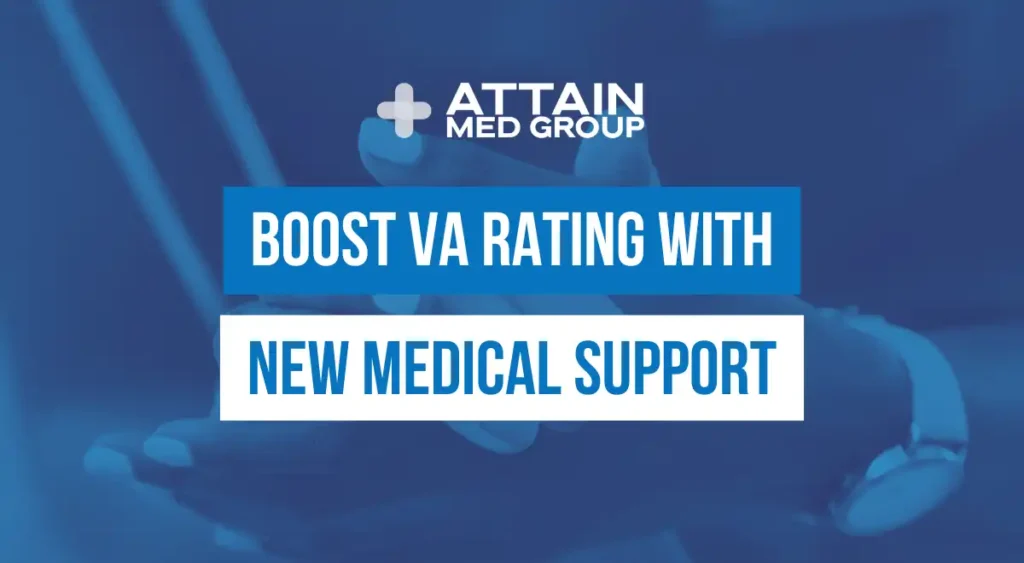You’re sitting at a 70% VA disability rating, a significant recognition of your service-connected conditions. But you know your health challenges feel more impactful than what that number reflects. You might be wondering how you can get the VA to see the full picture and understand how your conditions truly affect your daily life. The path, often focusing on updated medical support, for moving from 70% to 100%: How Veterans Can Increase Their VA Rating with Updated Medical Support, is what we’re discussing today. It’s about building a strong case backed by solid, current medical evidence, something that can make a real difference in achieving that 100% rating and the stability it brings, including better disability compensation.
Making sense of going from 70% to 100%: How Veterans Can Increase Their VA Rating with Updated Medical Support takes understanding and the right kind of documentation. You’ve already worked with the VA system to get to 70%. That’s no small feat. This shows you have what it takes to pursue this next step. Think of this next phase as reinforcing your existing claim with fresh, compelling details, potentially leading to a higher va rating.
We want the VA to clearly see how things are now, not just how they were years ago. It’s a journey, for sure, but one you don’t have to walk alone or uninformed when aiming for increased disability benefits.

Understanding Your Current VA Rating and the Goal
A 70% VA rating means the VA acknowledges substantial service-connected disabilities impacting your life. These disability ratings are based on the VA’s Schedule for Rating Disabilities, which outlines criteria for various conditions. The jump from a 70% current rating to a 100% rating is often the most significant for a veteran, affecting their monthly compensation.
It can mean a considerable increase in your compensation rate and access to more comprehensive benefits like CHAMPVA for dependents or even special monthly compensation in some cases. But getting there requires a solid strategy for your VA claim. Attaining this higher va disability rating opens doors to more substantial VA disability benefits. Many veterans don’t realize the full scope of additional benefits available with a total disability rating.
The VA needs to see either a worsening of your existing service-connected conditions, new additional conditions linked to your service (secondary conditions), or medical evidence that your service-connected disabilities prevent you from working (Total Disability based on Individual Unemployability, or TDIU). Each of these paths leans heavily on medical evidence. Your old records got you to 70%, but new or updated information, perhaps from a recent va medical appointment, is usually needed to bridge the gap to a 100% va disability rating.
It’s not just about more doctor visits; the quality and focus of the medical documentation you submit for your disability claim are paramount. The VA makes decisions based on the evidence in your file. So, our job is to make that file as strong and clear as possible, helping them understand the severity of your health condition and potentially increase your percent va disability.
The Power of Updated Medical Support: Your Strongest Ally
Why is “updated” medical support so important for your va disability claim? Because your health conditions can change over time. What was a moderate issue five years ago might now be severe, impacting your ability to secure disability benefits reflecting your true level of impairment. Symptoms can worsen, new related problems can pop up, and the overall impact on your daily life can increase, justifying a rating increase.
Updated medical evidence includes recent doctor’s visit notes, new diagnostic test results, specialist reports, and importantly, opinions from medical professionals that clearly describe your current level of impairment. If you’re aiming for that 100% VA rating, your medical evidence must paint a clear picture of how your service-connected conditions currently affect you. This is true whether you are trying to increase ratings for existing conditions, add an additional condition, or arguing for Total Disability based on Individual Unemployability (TDIU) to receive the highest disability compensation.
Think of it like this: your claim is a story, and medical evidence provides the crucial chapters for the Department of Veterans Affairs. Without recent information, the story is incomplete, making it harder to achieve a higher va disability rating. The VA raters can only work with what they have in front of them; let’s make sure they have everything they need to understand your current reality and the limitations imposed by your disabling condition.

From 70% to 100%: How Veterans Can Increase Their VA Rating with Updated Medical Support: Key Documents
To make the jump from a 70 percent va rating to 100 percent va, a few types of documents are incredibly helpful. These pieces of paper (or digital files) do the talking for you, showing the VA exactly what’s going on with your health. Your existing medical records from the VA and any private doctors are the foundation; ensure these are complete and submitted as part of your VA claim. But to truly strengthen your case for increased disability benefits, especially for a significant increase, we often need to go a bit deeper.
Independent Medical Opinions (IMOs) and Independent Psychological Evaluations
Sometimes, the notes from your regular doctor visits might not fully capture the extent of your disability or clearly link it to your service in the way the VA needs to see for a rating increase. This is where an Independent Medical Opinion (IMO) or, for mental health conditions, an Independent Psychological Evaluation can be a game-changer. These are detailed reports from private medical professionals who review your entire medical history, your service records, and conduct their own examination or evaluation, which can support your quest for a higher rating.
An IMO specialist is skilled at writing reports that use the VA’s language and address the specific criteria the VA looks for in disability ratings. For instance, if your PTSD symptoms have worsened, an independent psychologist can provide an evaluation detailing the increased severity and its impact on your social and occupational functioning. This is different from a regular therapy note; it’s an expert opinion specifically geared towards your VA disability compensation claim. For many, this is a critical step for obtaining additional benefits.
Finding a qualified professional for an IMO is important. You want someone with experience in VA claims; they understand what details are crucial for the VA raters. These reports can provide a clear, unbiased perspective that corroborates your claims of worsening conditions or establishes a service connection the VA might have previously missed, aiding in achieving a higher va disability rating.
The Critical Role of Nexus Letters
A “nexus” is simply a link or connection. In VA terms, a Nexus Letter is a document from a medical professional that states it’s “at least as likely as not” (or more likely) that your current condition is related to your military service. This is vital if you’re claiming a new condition as secondary to an already service-connected disability, a common path to increase your combined va disability rating. For example, if your service-connected knee injury has caused you to develop arthritis in your hip due to an altered gait, a nexus letter from an orthopedic specialist can establish that connection for the VA.
Without a clear nexus, the VA may deny a claim for a secondary condition, no matter how severe it is, impacting your potential disability compensation. The letter should detail the doctor’s credentials, confirm they’ve reviewed your pertinent records, provide a medical rationale for the connection, and then give their explicit opinion on the likelihood of the connection. For example, information from the National Center for Biotechnology Information indicates how chronic pain, often a primary service-connected issue, can lead to depression, which would require a nexus to connect for VA disability benefits.
Who can write one? Your treating doctor can, if they are willing and understand what’s needed. But often, specialists who perform IMOs are also adept at writing strong nexus letters because they are familiar with VA requirements. This letter explains the “why” and “how” one condition led to another, filling in a crucial piece of the puzzle for the VA and your overall va disability compensation.
Don’t Overlook Lay Statements and Buddy Letters
Medical evidence is king, but personal statements can provide powerful supporting context for your disability claim. Lay statements (from you, the veteran) and buddy letters (from friends, family, or fellow service members) describe, in everyday language, how your service-connected conditions affect your daily life. They can talk about the pain you experience, the activities you can no longer do, changes in your mood or behavior, and your struggles with work. These can be crucial for demonstrating the severity of your health condition.
While a doctor describes your diagnosis and symptoms clinically, your spouse might write about how your back pain prevents you from playing with your kids, or how your PTSD causes you to isolate. A former colleague might explain how your service-connected migraines impacted your job performance. These statements add a human element and can corroborate the severity noted in medical reports for your service-connected disability. The VA does consider these statements, especially when they are detailed and consistent with other evidence and can support an increase in your percent va disability rating.
When asking someone to write a buddy letter, guide them on what to include. They should state their relationship to you, how long they’ve known you, and specific observations about your condition and its impact. General statements are less helpful than specific examples; detailed accounts strengthen your VA claim and the chance for higher compensation rates.

Strategic Approaches to Reach 100%
There are generally two main pathways to reach a 100% VA disability rating once you’re at 70%. One is through the schedular rating system, where the combined total of your individual disability ratings mathematically reaches 100%. The other is by being awarded Total Disability based on Individual Unemployability (TDIU), which can also grant 100% disability benefits.
The Schedular Path: Increasing Existing Ratings and Adding Secondaries
VA math isn’t straightforward addition when calculating your combined va disability rating. The VA uses a “whole person theory” and a combined ratings table. For example, if you have a 50% rating and a 30% rating, your combined rating isn’t 80%; it’s actually 65%, which the VA then rounds to a 70% current rating. To get to a 100% schedular percent va disability rating, you often need multiple conditions at high percentages or one or two very severe conditions maxed out, plus others. You can review the VA’s combined rating table to understand how this works.
Here’s a simplified example of how VA math combines ratings:
| Step | Description | Example Calculation | Resulting Percentage Value |
| 1. Highest Rated Condition | Start with your highest single disability rating. | e.g., Service-connected condition A is 50% | 50% |
| 2. Remaining “Well” Percentage | Subtract this from 100% efficiency. | 100% – 50% = 50% remaining efficiency | 50% |
| 3. Next Highest Condition | Apply the next disability rating to the remaining “well” percentage. | Service-connected condition B is 30%. Calculate 30% of the 50% remaining efficiency. (0.30 50 = 15) | 15% |
| 4. Combine Values | Add this new value to the initial rating points. | 50 (from condition A) + 15 (from condition B) = 65 | 65% |
| 5. VA Rounding | Round the combined value to the nearest 10%. | 65% rounds to 70% | 70% Combined VA Disability Rating |
This is where updated medical evidence showing your current conditions have worsened becomes critical for your va ratings. If your PTSD was rated at 50% but now meets the criteria for 70% or even 100% due to increased severity of symptoms (like suicidal ideation, total social and occupational impairment), updated psychological evaluations are essential for your VA disability claim. Similarly, if your back condition has deteriorated significantly, new imaging and a specialist’s report detailing loss of motion or chronic pain impacting your ability to function are key for a higher rating.
Adding new, secondary service-connected conditions also helps climb the ladder to a higher combined va disability. If your service-connected diabetes (Type II) has now led to neuropathy in your feet, getting neuropathy service-connected with its own rating will contribute to your overall combined rating. Again, a strong nexus letter is often required to link these secondary conditions to your primary service-connected ones, impacting your monthly compensation.
The TDIU Path: When Your Conditions Prevent Work
Total Disability based on Individual Unemployability (TDIU) is an avenue for veterans whose service-connected conditions prevent them from securing and maintaining “substantially gainful employment,” even if their schedular rating isn’t 100%. If granted TDIU, you are paid at the 100% compensation rate. For many at 70%, this is a very viable path to total disability benefits, especially if your conditions directly impact your ability to hold down a job. This is a form of total disability based on your inability to work.
To qualify for TDIU, generally, you must have at least one service-connected disability rated at 60% or more, OR two or more service-connected disabilities with at least one rated at 40% or more and a combined va disability rating of 70% or more. The evidence must show you are unable to work due to your service-connected disabilities. This isn’t just about being unemployed; it’s about being unemployable. You will need to fill out VA Form 21-8940 (Veteran’s Application for Increased Compensation Based on Unemployability) to apply for these TDIU benefits.
Medical evidence is central here for your va claim. Doctor’s statements detailing your limitations (e.g., inability to sit or stand for long periods, cognitive difficulties from TBI or PTSD impacting concentration, medication side effects) are very important. An IMO can specifically address your capacity to work, looking at your medical conditions and translating them into vocational limitations. Lay statements from former employers or co-workers can also support a TDIU claim and your pursuit of individual unemployability status, leading to higher VA disability compensation.
Understanding if you qualify for individual unemployability can sometimes require assistance, perhaps from a disability experts. The VA may also consider if vocational rehabilitation would be feasible for you. If not, this strengthens the argument for TDIU. The key is demonstrating that your service connected health condition prevents sustained work.
Your Action Plan: Steps to Take Now
Feeling overwhelmed? Let’s break it down into manageable steps you can start taking to improve your percent va disability rating. This isn’t a race, but consistent, focused effort will get you closer to your goal of a higher va rating and better disability benefits.
- Gather and Review All Your Records: Request complete copies of your medical records from the Veterans Affairs (VA) and any private doctors you’ve seen. This includes your C-File (Claims File) from the VA, which contains all documents related to your va claims. Read through them to understand what’s already documented about your conditions.
- Analyze Your Current Rating Decision: Look at your most recent VA rating decision letter. Understand which service-connected conditions are rated and at what percentage. Identify areas where you believe your condition has worsened or where new related additional conditions have appeared.
- Document Your Symptoms and Limitations: Start keeping a journal. Note how your service-connected disabilities affect your daily activities, your ability to work (if applicable), your mood, and your relationships. Be specific, as this can be very helpful when talking to doctors, preparing for Compensation & Pension (C&P) exams, or if you need lay statements. This helps show the impact on your daily life.
- Be Open and Honest With Your Doctors: During your va medical appointments or visits to a private care facility, don’t downplay your symptoms or your pain. Clearly explain the full extent of your difficulties. Ask your doctor if they believe your condition has worsened and if they would be willing to document this thoroughly. Prepare for appointments by noting specific changes.
- Consider an Independent Evaluation: If your current medical records don’t seem to fully capture the severity of your mental health condition or physical health conditions, or if you need a strong nexus opinion, an Independent Psychological Evaluation or an IMO could be very beneficial. Research professionals who specialize in VA claims; they can help build a stronger case for a percent rating increase.
- File the Correct Claim: For an increase in an existing condition, you typically file VA Form 21-526EZ, Application for Disability Compensation and Related Compensation Benefits. If applying for TDIU, include VA Form 21-8940. Make sure to clearly state what you are claiming (e.g., “increase for PTSD,” “TDIU due to service-connected back condition and PTSD,” “service connection for secondary condition”).
- Submit All New Evidence: When you file your va disability claim, include all your new and updated medical evidence, IMOs, nexus letters, and lay statements. Make sure everything is clearly labeled and organized to support your request for a higher va disability compensation rate.
- Prepare for C&P Exams: If the VA schedules a Compensation and Pension (C&P) exam, be prepared to discuss your conditions honestly and thoroughly. Review your notes and be ready to explain how your disabilities affect you. This exam is a critical part of the VA’s assessment for your disability claim.
Taking these steps methodically will build a much stronger case. It’s about being proactive and providing the VA with exactly what they need to make a favorable decision on your disability ratings.

The Value of Persistence and Precision
The VA claims process can sometimes feel like a marathon, not a sprint, especially when aiming for a higher percent disability rating. It’s easy to get disheartened if things take time or if you hit a snag. But persistence is truly important; many veterans achieve their deserved va ratings through continued effort and by providing the necessary evidence. Don’t give up if your first attempt for a rating increase isn’t successful; look at the reasons for denial and see what more medical evidence or clarification might be needed. Sometimes this might involve a supplemental claim or a higher-level review.
Precision in your application and your evidence is also vital for your disability claim. Make sure forms are filled out completely and accurately. Ensure that medical opinions clearly state the required nexus language (“at least as likely as not”) if applicable for any additional conditions. Small details can make a big difference in how smoothly your claim is processed. Being thorough now can save you a lot of time and frustration later when dealing with the Veterans Affairs claims process.
Remember, you are your own best advocate. You know your body and your struggles better than anyone. Keep learning, keep gathering your support, and keep moving forward with your va disability claim. A higher percent rating might be closer than you think with the right approach.
When to Call for Backup: Professional Help
For more complex cases—or if you’ve faced denials or are seeking a higher combined rating or TDIU benefits—it may be worth turning to experienced professionals who specialize in VA claims. Accredited claims agents or disability experts can help develop a stronger strategy and ensure your medical evidence is presented in a way that maximizes your chances of success.
Choosing to get help isn’t a sign of weakness—it’s a strategic step toward securing the benefits you’ve earned through your service and sacrifice.
If you’re looking for expert guidance with every step of the claims process—from evidence gathering to strategy and submission—contact Vet Claim Solutions. Our team is here to help you pursue the VA rating and compensation you rightfully deserve.

Conclusion
Making that move from a 70% to a 100% VA disability rating is a significant step—but it is absolutely achievable. It hinges on your ability to clearly demonstrate to the VA the current severity of your service-connected disabilities using robust, up-to-date medical evidence. Focusing on comprehensive documentation, including well-crafted Independent Medical Opinions and strong Nexus Letters, can truly pave the way for a successful increase in your VA disability compensation.
You’ve already shown resilience by getting to 70%. Now it’s time to keep advocating for yourself. Gather the right evidence and take confident steps in your journey to 100%: How Veterans Can Increase Their VA Rating with Updated Medical Support. Understanding the claims process and the importance of solid, current medical documentation is key to securing the benefits and rating you’ve earned.
If you need help obtaining high-quality medical evidence to support your claim, contact Attain Med Group. We specialize in Nexus Letters and Independent Evaluations to help veterans like you reach that 100% rating.

